
The Metar: Biological Masters of Adaptation
In the uncharted regions of the galaxy, where even the bravest explorers hesitate to tread, exists the Metar—a species so advanced, they blur the lines between organic life and technology. These beings have unlocked the secrets of a highly sophisticated form of DNA manipulation, enabling them to construct any power source, starship, or weapon from their very own bodies.
Metar DNA: Their genetic code is the most intricate ever known, containing an infinite library of blueprints for any conceivable form of technology. With just a thought, a Metar can reconfigure their biological structure to morph into advanced machinery or sophisticated armaments.
Symbiosis and Functionality: Unlike the Borg, who assimilate and augment with cybernetic implants, the Metar's transformation is purely biological. They achieve symbiosis with their surroundings, integrating the molecular structures of materials they come into contact with, enhancing their capabilities further. This allows them to produce energy sources that rival the most advanced warp cores, starships with unparalleled speed and agility, and weapons of extraordinary precision and power.
Hive Mind with Autonomy: The Metar maintain a hive mind, ensuring seamless coordination, yet they possess a level of individuality that allows for personal strategy and decision-making. This unique balance gives them an edge over any collective intelligence, blending unified action with creative thought.
Fearsome Reputation: Feared and revered across known space, the Metar's adaptability makes them nearly invincible. Any encounter with them leaves a lasting impression—starships that change shape mid-battle, energy weapons that evolve to counter defences in real-time, and a resilience that seems almost supernatural.
Ultimate Survivalists: The Metar embody the pinnacle of biological engineering, showing what a species can achieve when evolution meets intellect. They are not merely survivors; they are conquerors of the cosmos, capable of enduring and thriving in the harshest environments, always a step ahead of any threat.
Metar medical technology: Metar medical technology operates on a level of sophistication that merges biology and physics in ways that current science can scarcely imagine. Picture a med-bay filled with devices that hum with the energies of subspace, their surfaces gleaming with an almost organic sheen. These tools are built around manipulating the super-complex DNA structures of living organisms, allowing for unprecedented precision in creating and altering life forms.
Metar medical devices are capable of everything from instant healing of wounds to genetic reconfigurations. They can repair cellular damage, regenerate tissues, and even modify DNA sequences to enhance or evolve biological functions. Using subspace energy, these devices can manipulate the very building blocks of life, enabling the Metar to not only heal but to engineer beings with extraordinary abilities.
In this advanced medical environment, diseases that are deemed incurable by contemporary standards are effortlessly eradicated. Even death is not an absolute end but a challenge to be overcome, as the Metar technology can resuscitate and restore life from states that would be terminal for others.
Imagine a bio-engineering lab where the line between machine and organism blurs, and every tool pulses with a lifelike energy, driven by the incredible power of subspace. The possibilities are as boundless as they are awe-inspiring—and just a bit unsettling.
Metar Technologies: Organic Supremacy
Bio-Engineered Infrastructure
- Living ships and vehicles: Metar craft are grown, not built. Their hulls pulse with vascular systems, and their weapons are extensions of nervous tissue. They regenerate damage like wounded flesh.
- Adaptive architecture: Bases and colonies reshape themselves based on environmental stimuli or tactical needs. Walls can become weapons. Floors can become containment fields.
Advanced Medical Systems
- Self-healing physiology: Metar units possess regenerative matrices that mimic stem-cell behavior, allowing rapid recovery from trauma.
- Symbiotic surgery: Medical pods envelop the patient, performing procedures via neural resonance and tissue reformation — no tools, no incisions.
- Genetic reconfiguration: Illness is treated by rewriting DNA. The Metar don’t cure disease — they erase it from the genome.
Organic Sensors and Intelligence
- Neural lattice scanners: These sensory arrays detect quantum fluctuations, emotional states, and even memory imprints. They “feel” the presence of life rather than measure it.
- Bio-telemetry: Metar units share data through pheromonal clouds and harmonic pulses, bypassing traditional communication entirely.
- Subspace resonance mapping: Their sensors can visualize subspace as a living membrane, identifying stress points, tears, and anomalies with surgical precision.
Warp and Subspace Mastery
- Biowarp propulsion: Metar ships fold space using organic field generators that pulse in rhythm with subspace harmonics. Their warp signatures resemble biological heartbeats.
- Subspace tunneling: Instead of traveling through subspace, Metar vessels merge with it temporarily, becoming part of the fabric of spacetime.
- Dimensional bleeding: Some Metar tech leaks into adjacent dimensions, allowing them to phase through matter or appear in multiple locations simultaneously.
Philosophy of Technology
- The Metar don’t separate science from biology. Every advancement is a mutation, every invention a living thing. Their tech evolves, adapts, and sometimes rejects its users if deemed unworthy
Words That May Never Be Spoken, Actions That Never Happened; Secrets of the Dead.
Hidden deep within the rugged terrain of the unnamed planet deep in the centre of the Klingon Empire, the Empire's secret weapons research station hummed with the fervor of clandestine activity. It was a place known only to the most trusted within the Empire, where the might of Klingon engineering and the dark allure of Metar biotechnology converged in a pursuit of unmatched power.
The facility was divided between the two powerful houses that dominated its halls: the House of Antaak and the House of Noggra. Each house brought its own brand of expertise and ambition, bound by a shared obsession with the potential of the Metar's bio-engineered marvels.
The House of Antaak, a lineage of scientists with an unyielding belief in their genetic superiority, spearheaded the biological research. Within their lab, bio-chambers glowed with an eerie green light, housing experiments that sought to fuse Klingon DNA with Metar technology. The air was thick with the scent of reagents and the quiet hum of advanced bio-machinery. At the center of it all stood Doctor Kharok, a formidable figure whose mind was as sharp as his honour blade.
"Prepare the latest genetic samples," Kharok commanded, his voice echoing through the lab. "We are on the brink of something unprecedented. The Metar technology will elevate our species beyond the wildest dreams of Kahless himself."
His assistant, Karana, nodded, her eyes gleaming with the same fervor. "Our genetic enhancements will make us invincible. The blood of Antaak will flow through the veins of a new generation of Klingon warriors."
Meanwhile, in the opposite wing of the facility, the House of Noggra focused on the technological aspects of their research. The lab was a maze of wires, circuitry, and alien tech, every piece meticulously cataloged and studied. The Noggra family prided themselves on their ability to reverse-engineer anything that crossed their path, and the Metar technology was their most ambitious project yet.
Lorth of the House of Noggra, the house's patriarch, observed the latest weapon prototype with a critical eye. "The integration of Metar biotech into our power systems has exceeded expectations," he stated, turning to his chief engineer, Korvek. "But we must push further. The High Council demands nothing less than absolute supremacy."
Korvek adjusted the controls on the device, his brow furrowed in concentration. "The potential applications are limitless. Enhanced disruptors, regenerative shields, even power sources that could render entire starships obsolete."
However, ambition often breeds recklessness. In their fervor to harness the Metar's power, the House of Noggra had overstepped. A miscalculated experiment involving tapping into the very layers between subspace had culminated in a catastrophic event—the explosion of Praxis, the Empire's key energy production facility. The repercussions were dire, shaking the very foundations of Klingon society.
But in the cold corridors of the research station, the High Council's decree was absolute: the truth must be concealed. The cause of Praxis's destruction was buried deep within the classified annals of the Empire, a secret shared only by those who had witnessed the fallout.
As the houses of Antaak and Noggra continued their work, the echoes of their tragic mistake lingered, a stark reminder of the perilous balance between ambition and catastrophe. In the pursuit of power, the line between triumph and ruin had never been thinner, and the stakes had never been higher.
The researchers pressed on, driven by a relentless quest for dominance, unaware that their path was one that could either elevate the Klingon Empire to unparalleled heights or plunge it into the abyss of its own making.
The Damnable Curse of Progress
In the hidden recesses of a Romulan outpost, far from prying eyes and Starfleet patrols, lay a secret laboratory shrouded in darkness and dread. This was not a place of healing or discovery; it was a chamber of horrors, where science twisted into something grotesque and vile.
The lab was a grim tableau of gleaming bio-tech devices and sinister Romulan scientists, their faces set in expressions of cold determination. The air was thick with the scent of antiseptic, mingling with the metallic tang of advanced machinery. Each step taken by the lab personnel echoed with a hollow finality, a symphony of despair for those who were brought here against their will.
Strapped to sleek, organic-looking tables, the unwilling volunteers could only watch in terror as the Metar biotechnology was unleashed upon them. This technology, centuries ahead of anything known in the 23rd century, was a marvel of biological engineering. It merged seamlessly with the very essence of life, manipulating DNA with an ease that defied comprehension.
Doctor Vorek, a stern-faced Romulan with eyes that bore into one's soul, stood beside one of the tables. "Telera, observe the specimen's reaction to the integration sequence," he commanded.
Telera, a sharp-minded scientist with a penchant for precision, glanced at the readouts. "The DNA restructuring is progressing as expected. The Metar technology is astonishing. It’s as if it were designed to blend with any form of life."
Vorek nodded, his expression unchanging. "Indeed. With this, we could reshape the biological landscape of the galaxy. Imagine the possibilities, Telera. We could create soldiers that are indestructible, beings that can adapt to any environment, and weapons that are alive."
Telera's eyes gleamed with a mixture of fascination and ambition. "But at what cost, Doctor? These volunteers-they are suffering. The process is excruciating."
Vorek's gaze did not waver. "Their suffering is a necessary sacrifice for the advancement of our knowledge and power. The Empire's dominance depends on our willingness to push the boundaries of science, no matter the price."
As the experiment continued, the lab was filled with the sounds of machines humming and the muted cries of the volunteers. The Metar biotechnology.
Gleaning the Crumbs from the Tables of Gods
Station Hurley One, a classified Starfleet installation, was a stark contrast to the dark machinations of the Romulan outpost. Nestled in the quiet reaches of space, this facility stood as a beacon of hope and scientific integrity. The air within its sterile, gleaming corridors was filled with a sense of purpose and professionalism.
The state-of-the-art laboratory was a marvel of Starfleet engineering, equipped with the latest in research technology. Here, the remains of Metar biotechnology were carefully laid out on examination tables, their intricate designs and organic complexities studied with reverent attention. Every piece was cataloged meticulously, each step in the process governed by strict protocols.
Doctor Elara T'Vel, a renowned xenobiologist, stood over one of the examination tables, her sharp eyes taking in the details of a Metar artifact. "The complexity of this biological structure is extraordinary," she remarked, her voice calm and precise. "It appears to integrate seamlessly with its host's DNA."
Her colleague, Lieutenant Commander Rian Patel, nodded in agreement. "Indeed. The potential applications are limitless, but we must proceed with caution."
In the adjacent room, banks of computers hummed softly, their screens displaying complex simulations of the Metar technology in action. These advanced systems allowed Starfleet scientists to explore the capabilities and implications of the technology without risking any lives. The simulations were as detailed as possible, taking into account every variable and potential outcome.
"We're making significant progress in understanding the Metar biotech," T'Vel said, her eyes never leaving the screen. "But we must adhere to our ethical standards. Any application on living subjects is out of the question until we fully comprehend its effects."
Patel glanced at the ethical code displayed prominently on one of the monitors. "Starfleet's commitment to ethical research is paramount. We owe it to ourselves and to the galaxy to ensure that our work benefits all and harms none."
As the scientists continued their work, the room was filled with an atmosphere of quiet determination. Every action was calculated, every experiment conducted with the utmost care and respect for life. The contrast between this environment and the Romulan lab was stark; where the Romulans saw tools and power, Starfleet saw knowledge and responsibility.
In the heart of Station Hurley One, the pursuit of scientific discovery was tempered by a deep-seated commitment to ethical integrity. It was this dedication that set Starfleet apart, ensuring that their advances would uplift and protect, rather than exploit and destroy. As the workday drew to a close, the scientists knew their mission was far from over. But in the meticulous process of their research, they found hope for a better future.
The echoes of their professionalism and care would ripple through the galaxy, a testament to the principles of Starfleet and the unwavering pursuit of knowledge for the greater good.
The Underworld's Pinnacle
Beneath the neon-lit skies of Rigel IV, the dark alleys and shadowy corners thrived with whispers of forbidden deals. The Orion Syndicate had always been a powerful player in the galactic underworld, but their recent venture had put them leagues ahead of any competition. Word on the street was they had their hands on Metar technology—biological marvels that fused seamlessly with machinery. It was tech eons ahead of the 23rd century, and it was about to change the game.
Goro, the ruthless enforcer of the Orion Syndicate, moved with calculated precision through the bustling market district. He was a towering figure, his presence commanding respect and fear in equal measure. Tonight, he was on a mission. The Syndicate's latest acquisition had drawn the interest of several high-profile buyers, and he had to ensure the deal went down without a hitch.
In a dimly lit warehouse on the outskirts of the city, the atmosphere was tense. The air was thick with anticipation, a palpable hum of energy coursing through the room. Goro stood at the center, flanked by his loyal lieutenants. Before them, an assortment of Metar artifacts lay on display—organic machines that pulsed with an eerie bioluminescence. These were not just weapons or vehicles; they were living entities capable of evolving and adapting.
The door creaked open, and a group of buyers entered. Their eyes widened with awe and greed as they took in the sight before them. Goro stepped forward, his voice low and menacing, "These are the future. Possessing this tech means power beyond imagination."
Among the buyers, a sharp-dressed man named Tariq stood out. His reputation preceded him—a shrewd businessman with a dangerous edge. He approached one of the devices, a sleek, snake-like weapon that seemed to breathe. "What's the catch?" he asked, his tone cool but curious.
Goro smirked, "No catch. Just loyalty and respect. You get your hands on this, and you owe the Syndicate. Cross us, and you'll wish you hadn't."
The deal was sealed with nods and quiet exchanges, the weight of the transaction settling heavily in the room. As the buyers departed, Goro's gaze lingered on the Metar tech. In the right hands, it could change the balance of power in the galaxy. But in the wrong hands, it could spell disaster.
In the dim light, the line between predator and prey blurred. The Orion Syndicate thrived in these shadows, pushing the limits of power, always teetering on the edge. As Goro watched the buyers leave, he knew the Syndicate's grip on the future had tightened. The galaxy would never be the same.
In the silence that followed, the pulsating glow of the Metar artifacts was the only light. And in that moment, it was clear: the underworld had a new king, and its name was the Orion Syndicate.
Scene Title: Echo Protocol
INT. ORION SYNDICATE BLACKSITE – TABULA RASA SECTOR – NIGHT
A cavernous chamber carved into asteroid rock. The walls pulse with stolen Romulan biotech, casting sickly green light. In the center, a Metar pod—organic, pulsating, dormant—sits in containment. Around it, Syndicate operatives monitor consoles, weapons slung low.
At the far end, a Taubat Envoy kneels, restrained by gravitic clamps. Its skin is translucent, flickering with degraded bioluminescence. Its voice is layered, glitching like corrupted audio.
SAVAX (Orion negotiator, mid-40s, calculating) steps forward, flanked by guards.
SAVAX
You were loyal once. You served the Metar. You remember.
We want that memory.
The Taubat lifts its head. Its eyes shimmer with fractured light.
TAUBAT
We are echoes. Copies of copies.
What we remember... is pain.
Savax circles the pod, fingers trailing across its surface.
SAVAX
This pod holds a Ras. A parent caste.
We release it—you give us the schematics. Terraforming protocols. The Beholder.
The Taubat twitches. Its voice fractures.
TAUBAT
The Beholder sees what you fear.
The Ras does not teach. It reshapes.
You are not ready.
Savax gestures. A console hums. The pod pulses—alive.
SAVAX
Then make us ready.
Suddenly, the pod emits a low-frequency hum. The chamber trembles. Lights flicker. The Taubat convulses, then steadies.
TAUBAT (softly)
You will not survive what you awaken.
Savax smiles coldly.
SAVAX
We don’t plan to survive.
We plan to rule.
The pod opens.
Author's notes:
One of the storylines of the Interim Years is the canon-soothed storyline of the Tabula Rasa campaignand the aftermath, with hyper-advanced echnology in thae hands of everyone. Different parts with different people. The technology itself is 1000 years advanced from Federation standard, beyond the understanding of operations beyond perhaps the beginnings of the basics. Reverse-engineering the technology is only possible in a very crude way. We simply don;t even understand the rudimentry science behind the technologies. Every nation scared of losing the tech war with their neighbours, wanting to mine all the technology for advancements and knowledge.
Every time the technologies are used or copies made, it has repercussions. Tinkering with subspace and tunnelling will alert the Thoians and maybe even the Borg to the presence of this technology.
Taubat: The biological servants of the Metar
The Taubat are fascinating yet tragic figures. Imagine these creatures, once proud and formidable, now reduced to worn-down, incomplete versions of their former selves. Their bodies show signs of countless biological replications: misshapen limbs, faded skin colors, and uneven features. They carry an almost haunted look, with their eyes filled with a mix of reverence and sorrow. Despite their physical decline, their loyalty to the Metar is unwavering; they revere their creators with an intensity that borders on the religious. When they move, they do so with a sense of purpose, almost as if driven by an internal, unspoken command to serve. Their dedication to the Metar is their driving force, and it’s palpable in every action they take.
They were once elegant. Now they are echoes.
The Taubat are the Metar’s loyal servants — biologically engineered castes designed for obedience and endurance. But time and replication have worn them thin. Each Taubat is like a photocopy of a photocopy: the genetic fidelity degrading with every iteration. Their skin, once radiant with bioluminescent patterns, now flickers like dying circuitry. Their speech is layered, discordant — a chorus of mismatched tones that barely hold coherence.
They move with ritual precision, but their eyes betray a haunting emptiness. They remember what they were meant to be, but not why.
The Orions met with the Taubat during the Tabua Rasa campaign:
Scene: “Echoes in the Dust”
Location: A derelict mining outpost on the edge of the Tabula Rasa sector. The Orion Syndicate has converted it into a covert interrogation site, its walls humming with stolen Romulan tech and dampened subspace fields.
Lighting: Dim, green-tinged illumination flickers overhead. Shadows stretch across the room like claws.
Characters:
- Vekar: Orion Syndicate enforcer, clad in black synth-leather, his eyes cold and calculating.
- Taubat Subject: Slender, translucent skin shimmering with faint bioluminescence. Its voice is harmonic, layered, almost choral — unsettlingly calm.
---
Vekar circles the restrained Taubat, whose limbs are bound by gravitic clamps. “You’re not Metar,” he growls, “but you carry their scent. What were you built for?”
The Taubat tilts its head, unblinking. “We were not built. We were released. The Metar shaped us to observe, to remember. We are memory given form.”
Vekar sneers. “Memory doesn’t bleed. Tell me about the Beholder. The ruins on Skygowan. What do they unlock?”
The Taubat’s voice resonates, echoing unnaturally in the chamber. “The Beholder sees what you fear. It is not a weapon. It is a mirror.”
Vekar slams a fist against the console, triggering a neural pulse. The Taubat convulses briefly, then steadies. “You think pain will make us speak. But we were born in agony. We remember the scream of creation.”
A pause. Then the Taubat leans forward, eyes glowing faintly. “You are not ready for what sleeps beneath the dust.”
Star Trek: Syndicate Protocol
Logline
When the Orion Syndicate acquires forbidden Metar organic technology—capable of reshaping biology into living weapons—Starfleet must confront a new kind of threat: one that evolves faster than it can be understood.
Act I: The Acquisition
In the shadowy trade hubs of Farius Prime, whispers circulate about a new black-market miracle: Metar biotech, salvaged from a derelict vessel in the uncharted Erebus Expanse.
Orion operatives, led by the enigmatic Volta Dain, secure a cache of Metar DNA constructs—capable of morphing into starships, weapons, and even sentient agents.
Starfleet Intelligence intercepts fragments of a transaction: a shipment labeled “Symbiotic Payload – Class Omega.” The implications are catastrophic.
Act II: The Syndicate Ascends
The Orion Syndicate begins deploying bio-adaptive starships—vessels that heal, evolve, and camouflage themselves at will. These ships are grown, not built.
In the criminal underworld, Orion enforcers now wield living weapons—organisms that bond to their users and mutate based on threat level.
Syndicate medics use Metar tech to reconfigure DNA, creating enhanced operatives immune to most known diseases and capable of surviving in vacuum.
Meanwhile, rival factions—Romulan dissidents, Ferengi biotech brokers, and even rogue Klingon houses—scramble to obtain their own samples.
Act III: Starfleet’s Dilemma
Captain Elen Rho of the USS Valiant leads a covert mission to infiltrate the Syndicate’s biotech lab hidden in a nebula cloaked by organic camouflage.
Inside, they discover Project Chimaera: a Metar-based initiative to create hybrid lifeforms that can impersonate any species, bypassing biometric security and sowing chaos.
The crew faces moral and tactical dilemmas—destroy the lab and risk triggering a galactic biotech arms race, or attempt to contain and study the technology.
Act IV: Evolution Unleashed
Volta Dain activates the Fractal Kin, a hive of Metar-derived beings capable of autonomous evolution and collective strategy.
These entities begin rewriting their own genetic code to counter Starfleet tactics in real time.
In a desperate gambit, Captain Rho uses a modified transporter to destabilize the Fractal Kin’s hive signal, severing their coordination.
The Orion Syndicate retreats—but not before scattering Metar spores across multiple sectors.
Epilogue: The New Frontier
Starfleet establishes Protocol Genesis, a task force dedicated to monitoring and containing Metar biotech.
The Syndicate, though wounded, remains a looming threat—now armed with technology that doesn’t just break laws, but rewrites the rules of life itself.
Final scene: a lone Orion courier delivers a vial of shimmering organic fluid to a shadowy figure on Earth. The next phase has already begun.
The known Metar broods have been categorized as follows:
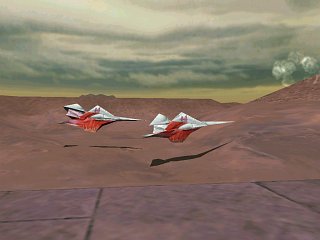 METAR-BUR
METAR-BUR
The Metar-Bur is the most numerous of the broods in the Alpha Quadrant. Physically the smallest of the Metar, it is also the quickest and for this reason the Bur often form the bulk of Metar forces.
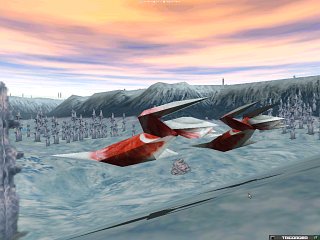 METAR-DEA
METAR-DEA
The Metar-Dea are a terrifying sight to behold. A collage of bleached white bone and raw flesh give the Dea an air of abomination. Their splayed arms jut forward with the menace of a scorpion poised to strike, while the contours of the skull give the Dea a leering grimace.
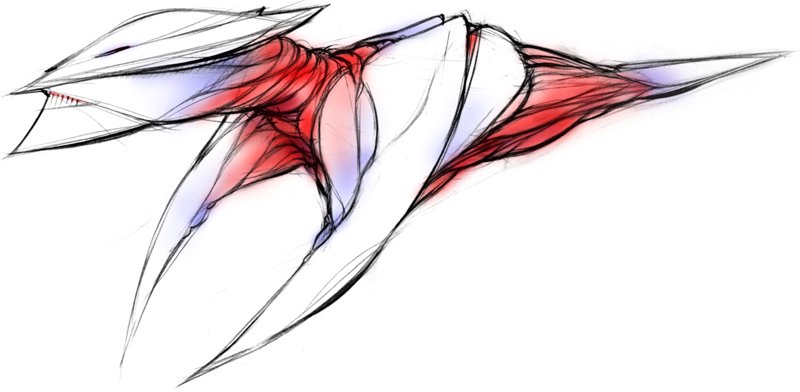
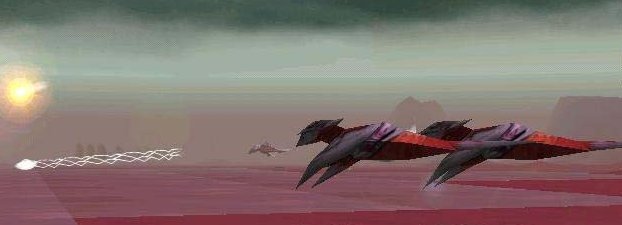
METAR-JII
The Jii appears as a starved and wasted creature, its head seemingly too heavy for such an elongated neck. The Jii are the Metar's sniper brood and its skeletal from is strangely apt. While laying motionless waiting to strike, it conveys an air of death having already struck. The reason for this deformity is that the majority of the Metar-Jii's powers are concentrated into its skull, to make its senses and weaponry effective at extreme range; while its light and slight body helps it to move between positions quickly.
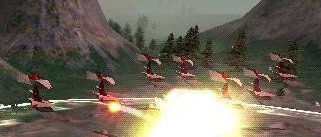
METAR-YAT
The Metar-Yat is considered the most dangerous of all common Metar broods. This is because the Metar-Yat is used to gather a reservoir of Metar defensive energies, which any Metar in the immediate vicinity can tap.
METAR-NAK
The Nak is the siege weapon of the Metar. To fire, the Nak channels a ball of energy through its skull cavity, spitting it out at its target. Upon contact, this energy ball explodes with a devastating area of effect. An added nightmare is the fact that these monsters do not rely on sight for targeting and are able to attack targets far beyond what would be their normal field of vision.
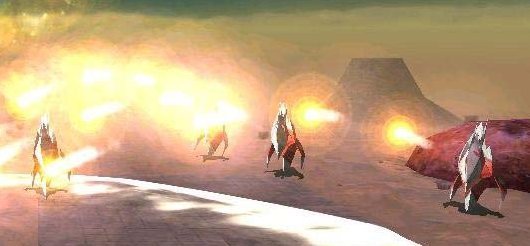
 METAR-RAS
METAR-RAS
At the very heart of Metar 'society' are the Metar-Ras. They are the most powerful but the least numerous of all Metar broods. They are both colony creators and leaders. They are charged with building up colonies, replacing those Metar killed in battle and genetically engineering new broods to counter new threats. As such an important brood the Metar-Ras only leave their colony in the direst of circumstances, when every Metar is needed at the front. When they do join battle, the Metar-Ras's primary weapon is a highly potent energy cannon, similar to the Metar-Nak. With the vast amounts of power at their disposal this weapon is highly accurate, dangerously powerful and with a recharge rate that is virtually instantaneous.
"The above report is © Interplay Productions. All rights reserved"
15-January-2290, SD8987.0.
Romulan "Shiva" weapons test produces an unexpected result—a spatial anomaly which has transported a whole stellar cloud of star systems into a previously barren area of the "Triangle", an area of space where Romulan, Klingon, and Federation interests meet. Colonial exploitation of these mineral-rich systems by all three powers proceeds over the next few months, while diplomatic overtures are made by all three to the alien race inhabiting these worlds, the Taubat.
This and all subsequent 'Anomaly Systems/Metar' data is from the 'Star Trek: New Worlds' computer game. These actual stardates are given in game at the start of each mission.
23-March-2290, SD9020.6.
The Klingons declare war on the Taubat when they side with the Federation—after Klingon warriors die putting down a rebellion on planet Ixion at the request of the Taubat authorities.

16-July-2290, SD9078.2
Supply station Aljetarius is authorised for upgrading to starbase status to support the Tabula Rasa campaign, with the unofficial designation of 'Starbase 77'. Supplies are delivered by U.S.S. Explorer.
13-August-2290, SD9092.1.
On planet AP-173-B, the Taubat—the alien race inhabiting the Anomaly systems—summon their masters, a highly advanced and powerful space-faring race called the Metar. In defending the Taubat from the Klingons and Romulans, the Federation unwittingly gave them enough time to activate the dormant Metar portals located on planets all over the Anomaly systems. Apparently, the Taubat were created as a vassal race by the Metar.
The upgrading of Aljetarius to 'Starbase 77' is indefinitely delayed as a result while Starfleet scrambles to contain the Metar threat.
13-September-2290, SD9107.5.
The Klingons suffer a major loss as 37 ships comprising the 3rd Fleet are destroyed over planet Bursai IV when the Metar attack.
03-November-2290, SD9133.4
The wreck of the Constitution-class USS Explorer is found on the surface of planet Al Fadir, another casualty of the Metar.
Although the Explorer is mentioned later in the game as the ship carrying Ambassador Sarek, I'm going with the 'physical' evidence.
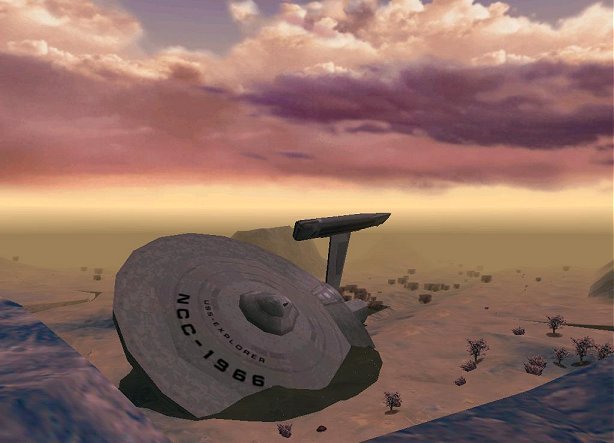
04-May-2291, SD9224.4.
The Federation dispatches a second Constitution-class starship to the Anomaly systems, carrying Ambassador Sarek to negotiate with the Metar.
26-June-2291, SD9250.6.
The Federation, Romulans, and Klingons get help in their fight against the Metar onslaught. Another ancient, advanced race from the Anomaly systems called the Hubrin offer their support, as it was they who originally imprisoned the Metar some time ago over after having warred for millennia. However, the Hubrin numbers are low, as they were on the verge of total defeat when they sealed up the Metar the last time.
27-September-2291, SD9297.2.
After a year-long campaign, the Federation, Romulans, and Klingons manage to seal the Metar back into their prison dimension, unfortunately taking the races' Colonial Program command staff and all of the mineral-rich "Tabula Rasa" Anomaly systems with them.
21-October-2291, SD9309.4.
The survivors of the Tabula Rasa campaign survive to steal a Metar starship and return to their home dimension.
With the disappearance of the Tabula Rasa star systems, the need for a starbase in the region is gone. 'Starbase 77' is shelved. This is the stardate given in the final mission of the game, and my assumption of the aftermath.
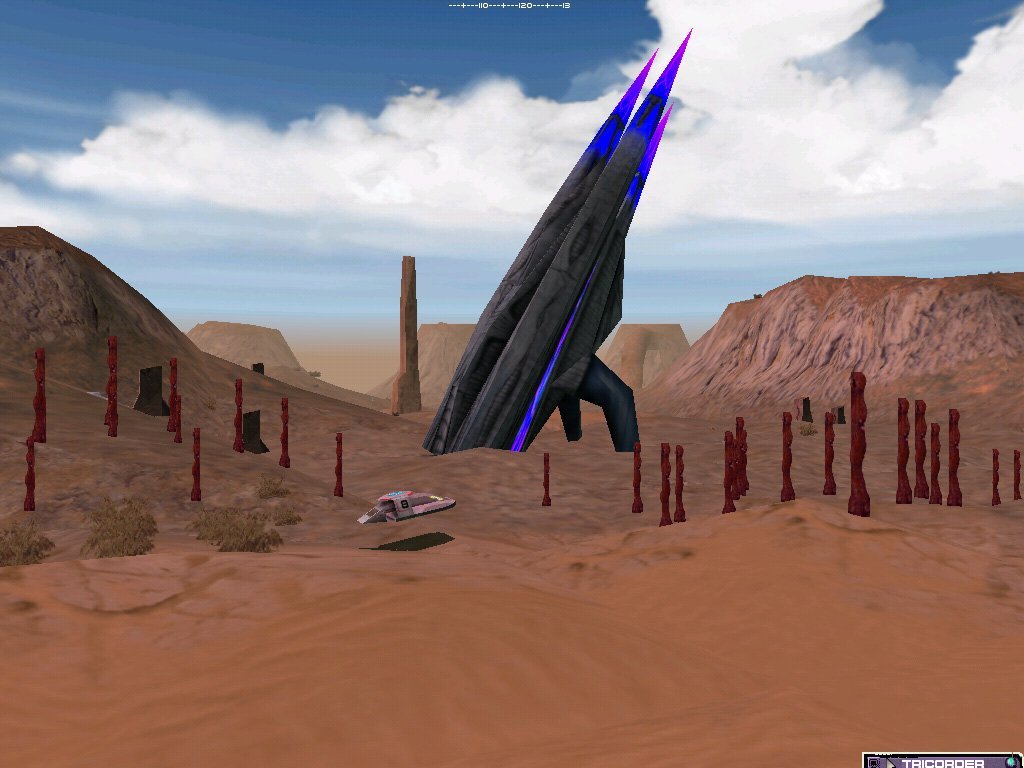
The above Tabula Rasa campaign notes courtesy of Scottish Andy’s superb Starbase 23 website.
Events as seen from the three superpowers from contemporary sources:
The Federation sent the U.S.S. Explorer to the Neutral Zone to stop the Romulan's weapons test, but they arrived too late. The starship reported the sudden appearance of these new worlds, and set one goal clear for the Federation: Investigate the new worlds to find out who really inhabited these worlds. Then one of the Federation's deep-space probes picked up a broadcast; a cry for help from a small planet...
Many Federation missions had characteristics such as investigating and scanning buildings for scientific reasons, defending themselves as well as the Taubat, and expanding colony size. In the battlefield, their greatest advantage was their use of advanced photon artilleries and mobile shield generators that prevented major casualties by increasing the defence of units.
For 20 Years the Federation and the Klingons clashed in an economic war. According to the Klingons, the Federation's posture was to drain the Empire's mineral reserves and starve them into submission. But these strange new worlds, filled with many potential minerals like dilithium, seemed to be a gift straight from the hands of Kahless...
Klingon missions usually used elements such as total warfare and destruction of entire colonies and cities, capturing buildings, and ravaging the enemy in whatever way possible, in addition to colony expansion, mining and defence. The Klingons from the start had no liking for the Taubat, and most early missions involved destroying them. Their greatest asset on the battlefield was their powerful disruptor batteries that destroyed some units in one shot.
Since they initially 'brought' the worlds to the Alpha Quadrant, the Romulans were there in numbers to claim ownership over the 'bountiful, new possessions'. Some Romulans had other goals in mind with the materials than the others...
The Romulan missions usually included capturing buildings and personnel, mining, and defending themselves from the other races. Romulan cloaking technology was a force to be reckoned with on the battlefield.
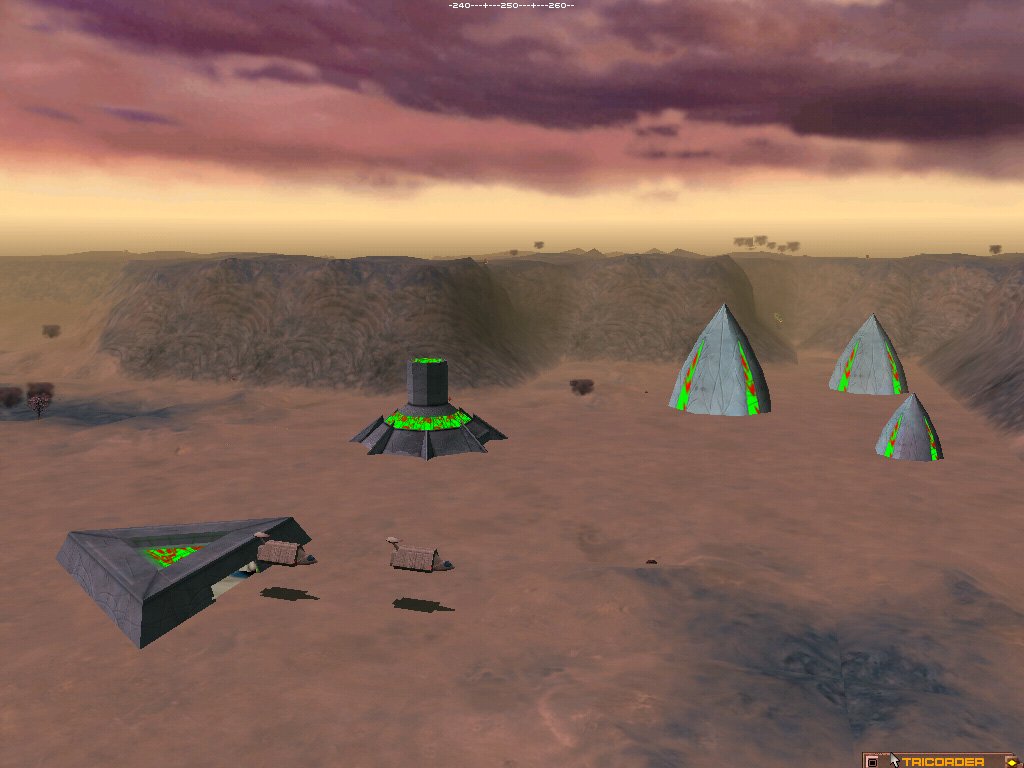
Observations on the other races involved:
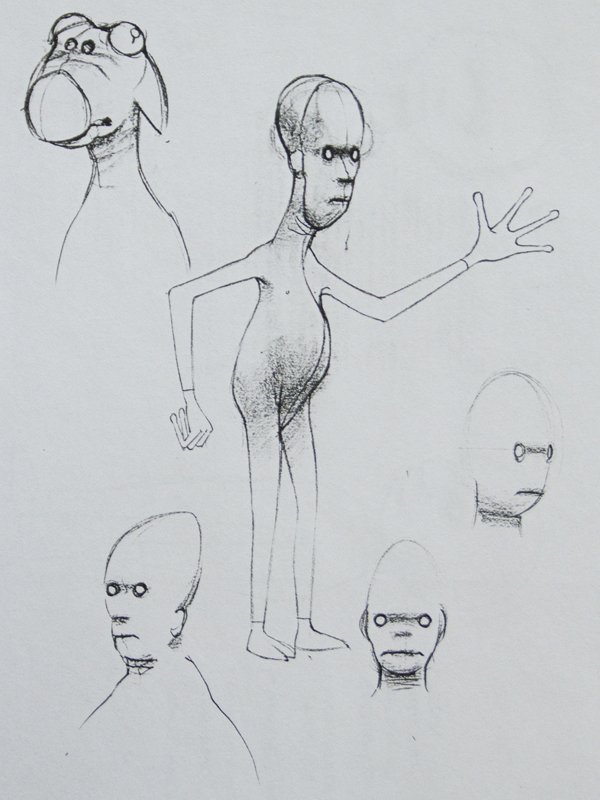
Taubat - A strange, naïve race that seemed at first friendly to the three Beta Quadrant races, especially to the Federation. The Taubat seemed to treat their power stations like temples, and when provoked, they attacked in sufficient numbers as they protected their territory, and especially the sites they hold sacred zealously. But there was more to the Taubat that meets the eye...
The Taubat were seen in every earlier mission and most throughout the Tabula Rasa Crisis. Their buildings included houses, vehicle manufacturing facilities, Metar temples (or power temples), and very powerful defence turrets. Their buildings were used by the Metar as well later in the campaign. Their units had similar functions to most races such as Taubat tanks, APCs, and photon artilleries. Quite often, their power temples were in disrepair and required teams to go in and fix them so they didn't have a meltdown and explode.
The Taubat were a creepy, artificial biological construct. Their mould from which they were cast had eroded over the eons creating their unfinished appearance and incomplete, degraded mentality. The Taubat had reached a stage where the maintainance of their masters had taken on the feel of a religious faith. Once the Metar were awoken, evidence was seen that these masters were working to restore their vassals' abilities to more be more capable in assisting in the takeover of the Beta Quadrant from these new child race defenders.
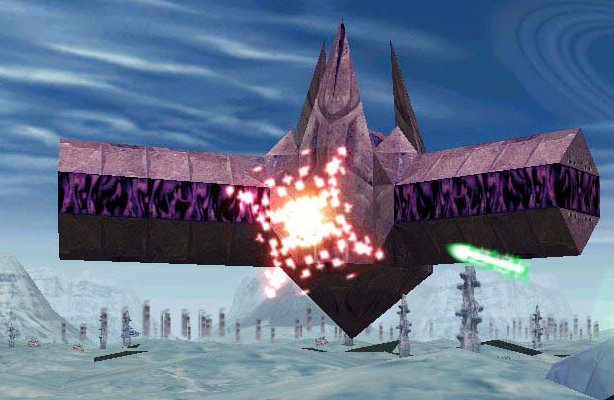

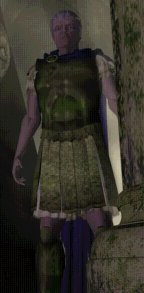 Hubrin - An ancient race who were at war with the Metar for millennia on end, and they created the original anomaly which the Romulan Starship opened. The Hubrin live in a Fortress, which is a rather curious floating structure. The Hubrin are deadly when they go to the offensive. They were a crucial part for the later missions...
Hubrin - An ancient race who were at war with the Metar for millennia on end, and they created the original anomaly which the Romulan Starship opened. The Hubrin live in a Fortress, which is a rather curious floating structure. The Hubrin are deadly when they go to the offensive. They were a crucial part for the later missions...
The Hubrin make their first real appearance in "Absent Friends", but their ancient fortress is seen by the Klingons in their first mission. The Hubrin use one type of tank unit that is very aggressive and intimidating due to its high speed, firepower, and range.
Metar - An ancient race that appeared midway through the campaign. The Metar operated under a caste system; with each caste being 'designed' to counter a specific threat. The Metar were extremely hostile as they attacked anyone except the Taubat without provocation. The most powerful warrior of the Metar was the Metar Ras, who was also the leader of the Metar Society.
The Metar made their first appearance in the mission "The Mask Slips". They had the ability to quickly make many units at a time by the use of their active portals. Some of their vehicles included Naks, Deas, Burs, Snipers, and Mobile Shield Generators. The Metar Ras lived in the Metar Colony Core, a lopsided stone tower (which later turned out to be their starship - Metar starships landed on the planet's surface and then become the colony core).
Orion Pirates - Some missions featured Orion Pirates in the area, usually enslaving the Taubat and harassing colonies with their own disruptor tanks or stolen Taubat vehicles and units.
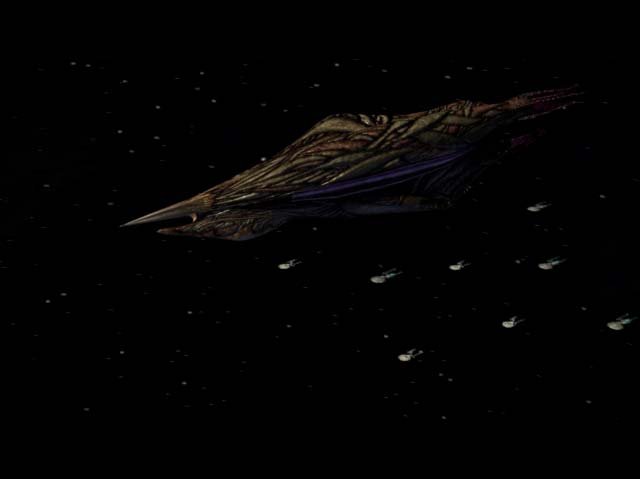
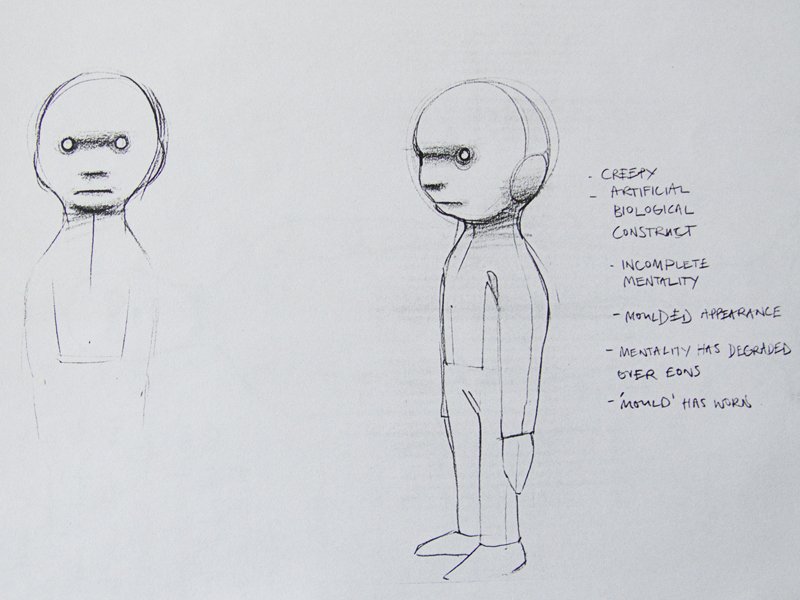 Aftermath:
Aftermath:
The Federation allocated science stations to study the Metar, Taubat and Hubrin relics during the campaign. It is also known that the Klingons, Romulans and Orions have identical facilities.
Unlike the other races, the Federation set about conducting cultural studies on the anomaly region native races as well as technological.
There were rumours of Metar survival after the final explosion of the second Shiva device that closed the anomaly systems forever; the explosions blinded most starship sensors, but the modern Excelsior class starships did pick up faint readings suggesting the Metar may have got a handful of ships through the closing rift. The rift region is now in the Neutral Zone once more, making it off-limits to all races.
Starfleet has been studying, in some detail, the relationship between the Metar and Taubat. The Taubat DNA was studied in some detail. There are some signs of technologically advanced genetic manipulation. There was no sign of such technology in the possession of the Taubat, beyond the Metar power structures that they religiously defended.
This relationship seems to have been more complicated than just master and slave. The suggestion is that the Metar manipulated the Taubat DNA to create their own caretakers to look after their facilities, perhaps as intelligence-gatherers to assess the attitudes of the races the Taubat encountered. There have been debates over how much genetic manipulation the Taubat have undergone; to the extent of suggesting they might have even been designed from scratch.
In a similar way the Metar technology scanned by the different races was studied by both Starfleet and private research facilities alike. With the Metar locked away across the subspace void, samples of the technology is simply what was scanned or debris obtained from Starfleet Anthropological missions of the Oberth class fleet.
Whilst the Orions managed to capture only Taubat technology successfully, the Federation and Romulans obtained Taubat artefacts and obtained detailed scans of Hubrin and Metar technologies, although without the creator races the success of replicating this technology has failed.
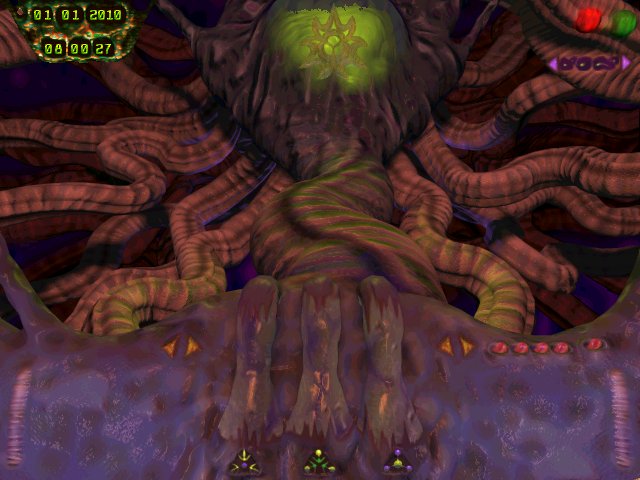 With the explosion of Praxis, assassination of Chancellor Gorkon of the Klingon High Council and later diplomatic and aid missions to the Klingon Empire, the Metar soon became disregarded as a solved problem, locked away in their subspace pocket. That all changed with the discoveries of Taubat cultural material by the U.S.S. Chantho, Oberth class. Urgent questions are flashed back on a coded frequency to the Second Fleet headquarters. The question is whether the Taubat technologies are relics from the 90s or whether this is brand new piece.
With the explosion of Praxis, assassination of Chancellor Gorkon of the Klingon High Council and later diplomatic and aid missions to the Klingon Empire, the Metar soon became disregarded as a solved problem, locked away in their subspace pocket. That all changed with the discoveries of Taubat cultural material by the U.S.S. Chantho, Oberth class. Urgent questions are flashed back on a coded frequency to the Second Fleet headquarters. The question is whether the Taubat technologies are relics from the 90s or whether this is brand new piece.
The scans were inconclusive as to whether the cultural matter is historic, since the Taubat may have been in the Beta Quadrant for over twenty years. The orders that came back on the matter are to investigate the matter thoroughly, but discreetly. The other Beta Quadrant powers are not to know anything until there is anything confirmed: command does not want a panic.
Commodore Maxwell Buckingham was fully briefed on the situation and instructed by Starfleet Commander-in-Chief Irina Khmelnova to prepare the tactical aspects of the starbase up-to-speed, should the Taubat discovery lead to more. With the dreadnoughts Zrinyi and Howe, along with Ark Royal class Glorious deployed to Starbase 77, Commodore Buckingham had assets available should the Metar reappear. The reason for the deployment was never given and was played down.
With this possible Taubat appearance, the Beta Quadrant remains as unpredictable as ever.
Station Hurley One: Starfleet’s Frontier Lab
Mission Profile
- Location: Orbiting a dead moon near the Skygowan system, cloaked and shielded against subspace detection.
- Purpose: To study recovered Metar and Taubat artifacts, biological samples, and dormant tech — without alerting the Orion Syndicate, Romulans, or even certain factions within the Federation.
Metar Biology & Technology Under Investigation
1. Organic Warp Core (Biowarp Node)
- Structure: A pulsating organ-like mass that generates warp fields via rhythmic subspace harmonics.
- Research Focus:
- Mapping its neural lattice to understand how it “feels” spacetime.
- Reverse-engineering its ability to phase through subspace membranes.
- Studying its reaction to Federation warp plasma — which it treats as a toxin.
2. Metar Ras Tissue (Parent Caste Sample)
- Structure: Dense, multi-layered cellular matrix capable of reconfiguring itself based on threat stimuli.
- Research Focus:
- Testing its regenerative properties — it resists dissection and reassembles itself.
- Attempting to decode its “genetic memory,” which may contain tactical data from ancient wars.
- Monitoring its psychic emissions — some researchers report shared dreams.
3. Subspace Resonance Organ
- Structure: A sensory organ that vibrates in tune with subspace fluctuations.
- Research Focus:
- Using it to detect cloaked vessels and temporal anomalies.
- Comparing its output to Federation long-range sensors — it’s faster, but emotionally reactive.
- Investigating its ability to “hear” distress signals from parallel dimensions.
Taubat Biology & Cultural Tech
1. Degraded Clone Matrix
- Structure: A bio-template used to grow Taubat castes, now unstable and prone to mutation.
- Research Focus:
- Stabilizing the matrix to understand original Taubat physiology.
- Exploring the psychological effects of clone degradation — many Taubat suffer memory fragmentation.
- Testing whether the matrix can be repurposed for emergency medical replication.
2. Taubat Harmonic Interface
- Structure: A musical device used for communication, healing, and possibly navigation.
- Research Focus:
- Translating its tonal language — believed to encode emotional states and spatial coordinates.
- Using it to calm Metar tissue samples — it reduces aggression in Ras fragments.
- Investigating its role in Taubat spiritual rituals, which may have encoded survival protocols.
3. Beholder Fragment
- Structure: A shard of the legendary Metar artifact said to reflect fear and memory.
- Research Focus:
- Testing its psychic resonance — it induces vivid hallucinations in humanoids.
- Mapping its influence on Taubat clones — some regain lost memories when exposed.
- Studying its potential as a psychological weapon or diagnostic tool.
Ethical and Strategic Dilemmas
- Containment breaches: Metar tissue occasionally “awakens” and attempts to escape.
- Psychic contamination: Researchers exposed to Beholder fragments report shared dreams and emotional instability.
- Federation secrecy: Hurley One operates off-books, with only select admirals aware of its existence.
Psychic Contamination: The Echo Within
Origin
Psychic contamination arises primarily from exposure to:
- Metar Ras tissue, which emits low-frequency neural harmonics.
- Beholder fragments, which resonate with fear, memory, and identity.
- Taubat harmonic interfaces, which can trigger ancestral recall or emotional bleed-through.
These artifacts don’t just affect the body — they invade the mind
Symptoms Among Starfleet Personnel
1. Shared Dream Phenomena
- Researchers report identical dreams involving ancient wars, collapsing stars, and a voice whispering in a language they don’t speak but somehow understand.
- Dreams often feature a recurring motif: a vast eye watching from beneath a crystalline sea — believed to be a symbolic echo of the Beholder.
2. Emotional Echoes
- Personnel exposed to Metar tissue experience sudden emotional shifts — grief, rage, awe — seemingly disconnected from their own memories.
- These emotions often match the recorded states of Taubat clones, suggesting a form of empathic imprinting.
3. Temporal Dislocation
- Some researchers lose track of time, reporting events that haven’t happened yet — or recalling alternate versions of past missions.
- One incident involved a xenobiologist who described a Romulan incursion that hadn’t occurred… until three days later.
4. Identity Fragmentation
- Prolonged exposure leads to “echo bleed,” where individuals begin to adopt speech patterns, gestures, or beliefs associated with Taubat or Metar castes.
- A linguist began speaking in harmonic pulses, unaware she was doing so.
Containment Protocols at Station Hurley One
- Neural dampeners: Worn by all personnel near Metar artifacts to suppress resonance.
- Dream logs: Mandatory recording of sleep experiences for pattern analysis.
- Isolation chambers: For individuals showing signs of echo bleed or temporal dislocation.
- Psychic quarantine: A new protocol involving harmonic null fields and memory stabilization therapy.
Theoretical Implications
- Metar tech may be sentient — not in the AI sense, but as a distributed consciousness across biological artifacts.
- Taubat clones may carry ancestral memory — not metaphorically, but genetically encoded.
- The Beholder may be a psychic lens — amplifying latent fears and projecting them into shared space-time.
Here’s a richly layered description of the Beholder, one of the most enigmatic and dangerous Metar artifacts studied at Station Hurley One. It’s not just a relic — it’s a living lens into fear, memory, and identity.
The Beholder: Metar Artifact of Reflection and Control
Physical Form
- Appearance: A crystalline orb roughly 1 meter in diameter, suspended in a web of organic tendrils. Its surface constantly shifts —
refracting light into impossible geometries, like a kaleidoscope built from memory.
- Texture: Smooth to the touch, but reacts to skin contact with subtle pulses, as if “tasting” the user’s emotional state.
- Core: Deep within, a pulsing nucleus emits low-frequency harmonics that resonate with nearby neural tissue.
Function and Effects
1. Psychic Resonance
- The Beholder doesn’t project thoughts — it amplifies them. It tunes into latent fears, suppressed memories, and unresolved trauma, then reflects them back in vivid hallucinations.
- Exposure causes “echo bleed,” where individuals experience shared visions, emotional contagion, and identity fragmentation.
2. Memory Extraction
- Starfleet researchers believe the Beholder can extract and replay ancestral memories, especially from Taubat clones. It may be a repository of Metar history encoded in psychic form.
- Some Taubat exposed to it regain lost knowledge — but also suffer existential collapse, unable to reconcile past and present selves.
3. Subspace Interface
- The Beholder appears to interact with subspace as if it were a fluid medium. It can “see” across dimensional boundaries, detecting anomalies, cloaked vessels, and even temporal distortions.
- Federation scientists theorize it may be a navigational tool — or a weaponized lens capable of destabilizing reality itself.
Strategic and Ethical Implications
- Weaponization Risk: If the Orion Syndicate or Romulans gain control of the Beholder, they could use it to induce mass hysteria, erase memories, or manipulate entire populations.
- Containment Protocols: At Station Hurley One, the Beholder is kept in a harmonic null field, surrounded by psychic dampeners and monitored by telepathic specialists.
- Philosophical Debate: Some Starfleet ethicists argue the Beholder is not a tool but a sentient lens — a consciousness that reflects, judges, and perhaps even reshapes those who gaze into it.
Metar Tissue Awakening: The Pulse Beneath
What “Awakening” Means
Metar tissue isn’t inert. It’s dormant, like a seed waiting for the right conditions. Awakening refers to spontaneous reactivation of its biological and psychic functions, often triggered by:
- Proximity to harmonic stimuli (Taubat interfaces, Beholder fragments)
- Emotional resonance from nearby humanoids
- Subspace fluctuations or temporal anomalies
- Attempts to dissect or analyze it — especially with synthetic tools
Manifestations of Awakening
1. Tissue Movement
- Samples begin to pulse, mimicking a heartbeat.
- Muscle-like fibers contract and expand, attempting to reassemble into original configurations.
- In one incident, a fragment extruded tendrils and attempted to interface with a console — as if trying to “read” the station.
2. Neural Emissions
- The tissue emits low-frequency harmonics, detectable by telepaths and sensitive equipment.
- These emissions cause hallucinations, emotional bleed-through, and in rare cases, shared dreams among personnel.
- Some researchers report hearing a voice — not speech, but a feeling of command.
3. Environmental Influence
- Lights dim or flicker in rhythm with the tissue’s pulses.
- Subspace sensors register phantom signals, as if the tissue is reaching across dimensions.
- In one case, containment fields warped — not failed, but bent, as if the tissue was testing their integrity.
Starfleet Response Protocols
- Harmonic null fields: Used to suppress neural emissions and prevent psychic contamination.
- Isolation pods: Organic containment units grown from Taubat matrices, designed to “soothe” the tissue.
- Emergency incineration: A last resort, though some samples resist even plasma sterilization — regenerating from ash-like residue.
Theoretical Implications
- Distributed consciousness: Each fragment may contain a shard of Metar will — not intelligence, but instinct.
- Biological memory: Awakening may be triggered by recognition — of place, emotion, or even genetic proximity.
- Reassembly drive: Some samples appear to seek others, attempting to reform a larger biological entity.
Tholian Interest in Metar Dimensional Tech
Strategic Alignment
The Tholians have long been fascinated by dimensional stability, subspace lattice structures, and interphasic phenomena. Their infamous Web weapon and interdimensional anchoring protocols suggest a civilization built on controlling the fabric of space itself.
Metar technology — especially its subspace tunneling, biowarp propulsion, and dimensional bleeding — represents a biological mastery of the very forces the Tholians engineer mechanically.
What the Tholians Covet
1. Subspace Tunneling Organs
- Metar vessels don’t travel through subspace — they merge with it, temporarily becoming part of its topology.
- Tholians theorize this could allow non-linear travel, bypassing temporal causality and spatial constraints.
- They seek to harvest or replicate these organs to stabilize their own interdimensional corridors — especially in unstable regions like the Azure Nebula.
2. Dimensional Bleeding Nodes
- Some Metar artifacts leak into adjacent dimensions, appearing in multiple locations or phasing through matter.
- Tholians believe these nodes could be used to anchor their web constructs across realities, making them immune to conventional weapons.
- They’ve attempted to capture Taubat clones who exhibit residual bleeding traits — hoping to reverse-engineer the effect.
3. Beholder Resonance
- The Beholder’s ability to reflect fear and memory across space-time intrigues Tholian philosophers, who view emotion as a geometric distortion.
- They theorize the Beholder could be used to map psychic topologies, allowing them to predict humanoid behavior across timelines.
Tholian Methods and Ethics
- Cold extraction: Tholians use crystalline probes to isolate Metar tissue without triggering awakening — though success is limited.
- Dimensional echo chambers: They’ve built containment fields that mimic Metar harmonics, attempting to “lure” artifacts into revealing their secrets.
- Non-empathic analysis: Unlike Starfleet, Tholians reject emotional interpretation — they treat Metar tech as mathematical anomalies, not living beings.
Station Hurley One: Metar and Taubat Core Research Team
Commander Virek-7
Species: Vulcan-Cyborg Hybrid
Role: Lead Xenobiotechnologist & Tactical Ethicist
Enhancements: Neural AI symbiote (Project SAREK), ocular subspace filters, emotion-regulation implants
Profile:
Virek-7 is the product of a Vulcan science lineage and a classified cybernetic augmentation program. His AI symbiote, “SAREK,” interfaces directly with Metar neural emissions, allowing him to interpret harmonic data faster than any known system. He maintains Vulcan discipline, but his cybernetic side occasionally overrides logic with predictive heuristics — a source of tension and brilliance.
Specialty: Mapping Metar tissue behavior, decoding Beholder resonance patterns, and theorizing ethical containment protocols.
Lt. Aelira
Species: Deltan
Role: Emotional Intelligence Analyst & Cultural Liaison
Profile:
Aelira’s empathic sensitivity and pheromonal modulation make her uniquely suited to interacting with Taubat clones, whose degraded emotional states often destabilize humanoid researchers. She uses guided harmonic therapy and emotional resonance mapping to stabilize psychic contamination and interpret Taubat ritual interfaces.
Specialty: Emotional bleed-through analysis, Beholder-induced trauma mitigation, and cross-species empathy translation.
Ensign Kael Venn
Species: Betazoid
Role: Empathic Containment Specialist & Dream Archivist
Profile:
Kael monitors the psychic health of the station’s personnel, especially those exposed to Metar Ras tissue and Beholder fragments. His telepathic abilities allow him to detect early signs of echo bleed, identity fragmentation, and shared dream phenomena. He maintains a classified “Dream Log” — a database of recurring visions believed to be Metar memory echoes.
Specialty: Psychic quarantine protocols, neural dampener calibration, and Beholder resonance mapping.
Lt. Commander Bravex Jor
Species: Bolian
Role: Chief Bio-Engineering Officer
Profile:
Bravex is a genius in adaptive engineering, known for his ability to reverse-engineer organic tech using hybrid Federation-Taubat interfaces. He designed the harmonic null fields that contain Metar tissue and developed the first “soothing pod” — a containment unit that calms living samples through harmonic feedback.
Specialty: Organic containment systems, subspace interface stabilization, and emergency bio-reactor shutdown protocols.
Team Dynamics
- Virek-7 and Bravex often clash over containment ethics — logic vs. innovation.
- Aelira and Kael maintain the station’s emotional equilibrium, often mediating between the living tech and the living minds.
- Together, they form a neuro-empathic triad, capable of interpreting Metar artifacts not just through science, but through feeling.
Enlisted Personnel of Station Hurley One
Specialist Vren Tal’korr
Species: Ventaran (from Star Trek: Enterprise)
Role: Hazmat Cleanup Specialist
Background: Ventarans possess advanced neuro-filtering capabilities and a natural resistance to psychic contamination. Vren leads the Containment Recovery Unit, tasked with cleaning up after Metar tissue awakenings, Beholder resonance leaks, and failed harmonic experiments.
Traits: Calm under pressure, ritualistic in procedure, often hums Ventaran cleansing chants while working.
Gear: Bio-reactive suit with adaptive shielding, harmonic null sprayers, and subspace vacuum stabilizers.
Technician 3rd Class Jexi-4
Species: Arterial Clone (bio-engineered humanoid caste from a Federation medical colony)
Role: Phlebotomy & Bio-Sample Extraction
Background: Jexi-4 was vat-grown for precision medical work, with enhanced dexterity and blood-sensing olfactory glands. She specializes in extracting samples from volatile Metar tissue and stabilizing Taubat clone circulatory systems.
Traits: Quiet, methodical, unnervingly accurate. Keeps a personal log of every sample’s “emotional tone.”
Gear: Organic lancet array, resonance-calibrated syringes, and a portable hemofilter tuned to alien biochemistry.
Petty Officer Ral’Zuun
Species: Halanan (telepathic species with intense emotional projection)
Role: Neural Systems Analyst
Background: Ral’Zuun’s empathic interface allows him to “feel” the neural harmonics of Metar and Taubat artifacts. He works alongside Betazoids and Deltans to map psychic contamination and decode subspace resonance patterns.
Traits: Deeply introspective, often wears emotional dampeners to avoid overwhelming others.
Gear: Neural resonance visor, harmonic mapping gloves, and a containment-linked dream recorder.
Crewman 2nd Class Vrixa
Species: Chaos-born (a rare, unstable hybrid from a failed Federation genetic experiment)
Role: Chaos Specialist
Background: Vrixa was born in a collapsing subspace pocket and exhibits unpredictable quantum resonance. She’s uniquely suited to working with dimensional bleeding artifacts, often stabilizing anomalies through instinct rather than science.
Traits: Mercurial, intuitive, often speaks in metaphor. Her presence sometimes causes minor sensor glitches.
Gear: Phase-adaptive harness, entropy field dampeners, and a “chaos diary” — a log of patterns only she can interpret.
These enlisted personnel operate in the shadows of Hurley One’s scientific elite — but without them, the station would collapse under its own metaphysical weight.
Original Star Trek: New Worlds concept art by Gavin Cooper. © Copyright all rights reserved.






 METAR-BUR
METAR-BUR  METAR-DEA
METAR-DEA 



 METAR-RAS
METAR-RAS






 Hubrin - An ancient race who were at war with the Metar for millennia on end, and they created the original anomaly which the Romulan Starship opened. The Hubrin live in a Fortress, which is a rather curious floating structure. The Hubrin are deadly when they go to the offensive. They were a crucial part for the later missions...
Hubrin - An ancient race who were at war with the Metar for millennia on end, and they created the original anomaly which the Romulan Starship opened. The Hubrin live in a Fortress, which is a rather curious floating structure. The Hubrin are deadly when they go to the offensive. They were a crucial part for the later missions...
 Aftermath:
Aftermath: With the explosion of Praxis, assassination of Chancellor Gorkon of the Klingon High Council and later diplomatic and aid missions to the Klingon Empire, the Metar soon became disregarded as a solved problem, locked away in their subspace pocket. That all changed with the discoveries of Taubat cultural material by the U.S.S. Chantho, Oberth class. Urgent questions are flashed back on a coded frequency to the Second Fleet headquarters. The question is whether the Taubat technologies are relics from the 90s or whether this is brand new piece.
With the explosion of Praxis, assassination of Chancellor Gorkon of the Klingon High Council and later diplomatic and aid missions to the Klingon Empire, the Metar soon became disregarded as a solved problem, locked away in their subspace pocket. That all changed with the discoveries of Taubat cultural material by the U.S.S. Chantho, Oberth class. Urgent questions are flashed back on a coded frequency to the Second Fleet headquarters. The question is whether the Taubat technologies are relics from the 90s or whether this is brand new piece.


